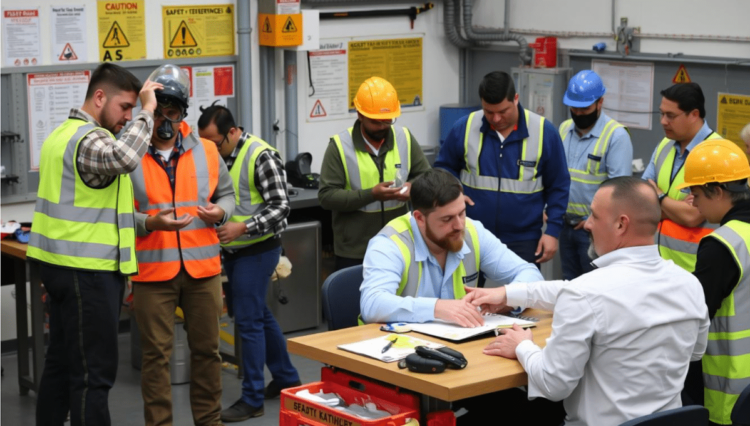Build A Thriving Learning Ecosystem For Your Workforce
Remember that time you desperately needed a new skill for work, but the only training offered was a clunky e-learning course filled with forgettable slides? Imagine a world where learning is dynamic, engaging, and readily available at your fingertips.
That’s the power of a learning ecosystem—a network of resources that fosters continuous growth, not just check-the-box compliance. This guide explores the secrets to building a thriving ecosystem, taking you beyond the boundaries of the traditional LMS and into a future of empowered learners.
Save Thousands Of Dollars With Coggno Prime Subscription
The Shortcomings Of Traditional LMS
Learning management systems have been the go-to for corporate training for years. They provide a central location to store and deliver learning materials. But, despite their popularity, traditional LMS platforms have some drawbacks.
One big issue is that they can be inflexible and impersonal. They don’t always adapt to how different people learn best. The Association for Talent Development (ATD) reports that employees who undergo personalized training have a 42% increased chance of showing greater competence in their positions. This tailored method speeds up the learning of skills and guarantees a superior level of proficiency. Yet, traditional LMS often offer a one-size-fits-all approach.
Another problem is that LMS often ensures employees follow company rules (compliance training) instead of helping them develop new skills. This can be a missed opportunity, as employees who can learn and adapt are more valuable in today’s ever-changing workplace.
Finally, with the huge advancements in LMS technology, sticking with traditional LMS can be more disadvantageous in the long run. For instance, old LMS doesn’t support social learning, which could prevent employees from sharing knowledge with other fellow learners. These tools don’t have some of the latest features—engaging and intuitive interface, gamification, etc.—that are proven to make learning more engaging and, thus, more effective.
Private Learning Management System (LMS)
The Power Of A Learning Ecosystem
Traditional LMSs are like filing cabinets for learning—organized but limited. On the other hand, a learning ecosystem is a vibrant and interconnected network, much like a real ecosystem. It brings together various resources and technologies to create a more supportive and effective learning environment.
Here’s why learning ecosystems are initiating a paradigm shift in training programs:
- Wider Range of Learning: Learning goes beyond textbooks and lectures. An ecosystem offers microlearning modules (bite-sized learning chunks), interactive videos, simulations, and more. This variety caters to different learning styles and keeps things engaging.
- Collaboration is Key: Learning doesn’t have to be a solitary activity. Collaborative tools like wikis, forums, and chats allow knowledge sharing and peer-to-peer learning. Imagine a network of experts within your organization, readily available to answer questions and support each other’s growth.
- Personalized Learning Paths: One size doesn’t fit all. A learning ecosystem tailors learning experiences to individual needs. An employee new to a role can receive a different learning path than someone with years of experience. This targeted approach ensures employees gain the most relevant skills for their roles.
- Learning in the Flow of Work: Forget classroom training! Learning becomes integrated into the daily workflow. Performance support tools provide resources and guidance exactly when employees need them, helping them apply new skills on the job and solidify their learning.
A 2023 Brandon Hall Group report found that organizations with strong learning cultures experience 21.8% higher profitability than those without. Having a thriving learning culture across the organization is key to developing a high-performing workforce and achieving a competitive advantage.
Must Read: What Does LMS Mean: Uses, Benefits, and Types of LMS
Building Blocks Of A Learning Ecosystem
Like a healthy plant needs various nutrients to thrive, a strong learning ecosystem relies on several key components working together. Each piece plays a specific role in creating a well-rounded learning experience for your employees. Here’s a breakdown of the essential building blocks:
- Content Management System (CMS): This is your digital library, where you can create, organize, and store all your online courses and training materials, from videos and presentations to documents and simulations.
- Learning Experience Platform (LXP): This is your personalized learning coach. It uses data and algorithms to recommend relevant content to employees based on their needs and goals.
- Collaboration Tools: Communication is key to learning! Tools like wikis, forums, and chat platforms allow employees to share knowledge, ask questions, and learn from each other in a social setting.
- Performance Management System (PMS): This system tracks employee progress through training programs, provides feedback on their learning journey, and ensures that the skills they develop are aligned with the organization’s goals.
- Microlearning Platforms: Not everyone has time for long training sessions. Microlearning platforms deliver bite-sized learning modules that are easily accessible and can be completed in short bursts throughout the workday.
- Learning Analytics Tools: Data is king! These tools help you measure how effective your learning programs are and identify areas for improvement. By analyzing data on course completion rates and knowledge retention, you can ensure your learning ecosystem delivers real results.
- Social Learning Platforms: The social media phenomenon has permeated almost every fabric of today’s society, changing how we learn. Nowadays, people can learn through virtual communities and social learning tools. These virtual platforms allow group learning modalities, allowing learners to share and gain new knowledge and skills with others easily.
Must Read: What To Look For In A Learning Management System?
Building Your Own Learning Ecosystem
Building a learning ecosystem from scratch might seem overwhelming, but with a well-defined plan, it can be a powerful investment. Here’s a step-by-step guide to get you started:
1. Identify Needs And Goals
Start by understanding your organization’s learning objectives and the specific skills your employees need to succeed. According to a 2023 LinkedIn Learning Report, 79% of learning and development professionals say they’re focusing on building skills critical for the future of work. Conduct surveys or focus groups to gather employee input on their learning preferences and knowledge gaps.
2. Evaluate Existing Resources
Take stock of your current corporate training programs, learning materials, and any LMS you might already have. Identify areas where your existing resources fall short and need improvement.
3. Define Your Budget
LMS costs can range anywhere from a few thousand dollars per year for basic plans to hundreds of thousands for enterprise-level solutions with extensive features. When determining your budget, factor in the cost of additional learning technologies, content creation, and potential ongoing maintenance.
4. Choose The Right Technologies
Select learning platforms and tools that align with your goals, budget, and learner needs. Consider features like microlearning capabilities, collaborative programs and tools, and performance management functionalities.
5. Develop A Content Strategy
Curate high-quality learning materials from external sources or create your engaging content tailored to your audience. This content strategy should encompass a variety of formats (e.g., videos, articles, microlearning modules) to cater to different learning styles and preferences.
6. Promote User Adoption
Clearly communicate the benefits of the learning ecosystem to employees and encourage them to participate actively. Utilize various communication channels and highlight success stories to generate excitement.
7. Monitor And Adapt
Continuously track the effectiveness of your learning ecosystem through user feedback and learning analytics. Analyze data to identify areas for improvement and adapt your approach based on user needs and learning outcomes.
The Future Of Learning
The future of learning is all about personalization. Learning ecosystems will become even more powerful with the help of cutting-edge technologies. Here’s what to expect:
- AI-powered learning: Imagine artificial intelligence (AI) suggesting learning paths perfectly matching your strengths and weaknesses. This is exactly what personalized learning ecosystems powered by AI will offer.
- Immersive experiences: Learning won’t be limited to your screen. Virtual reality (VR) and augmented reality (AR) will create realistic simulations using interactive training tools, making learning more engaging and effective.
- Micro-credentials and personalized journeys: Learners will build custom learning paths using bite-sized, focused learning modules (micro-credentials) that align with their goals and career aspirations. This fosters a culture of continuous learning where everyone can keep their skills up-to-date.
Methods And Techniques Of Training
Leverage Learning Ecosystems To Build A Culture Of Continuous Learning
Technology has changed life as we know it, paving the way for learning ecosystems. The emergence of these new learning environments addresses the gap in organizational learning that traditional LMS solutions have created.
Offering a more engaging, more dynamic approach, learning ecosystems allow employees to gain new knowledge and skills more effectively, adhering to the specific needs of both employees and the current workplace. This novel learning modality also promises to help employees achieve their maximum potential and drive innovation.
To meet your LMS and training needs, contact Coggno team. We are ready to help you in whatever way we can.
Maximize Training, Minimize Costs With Coggno Prime









